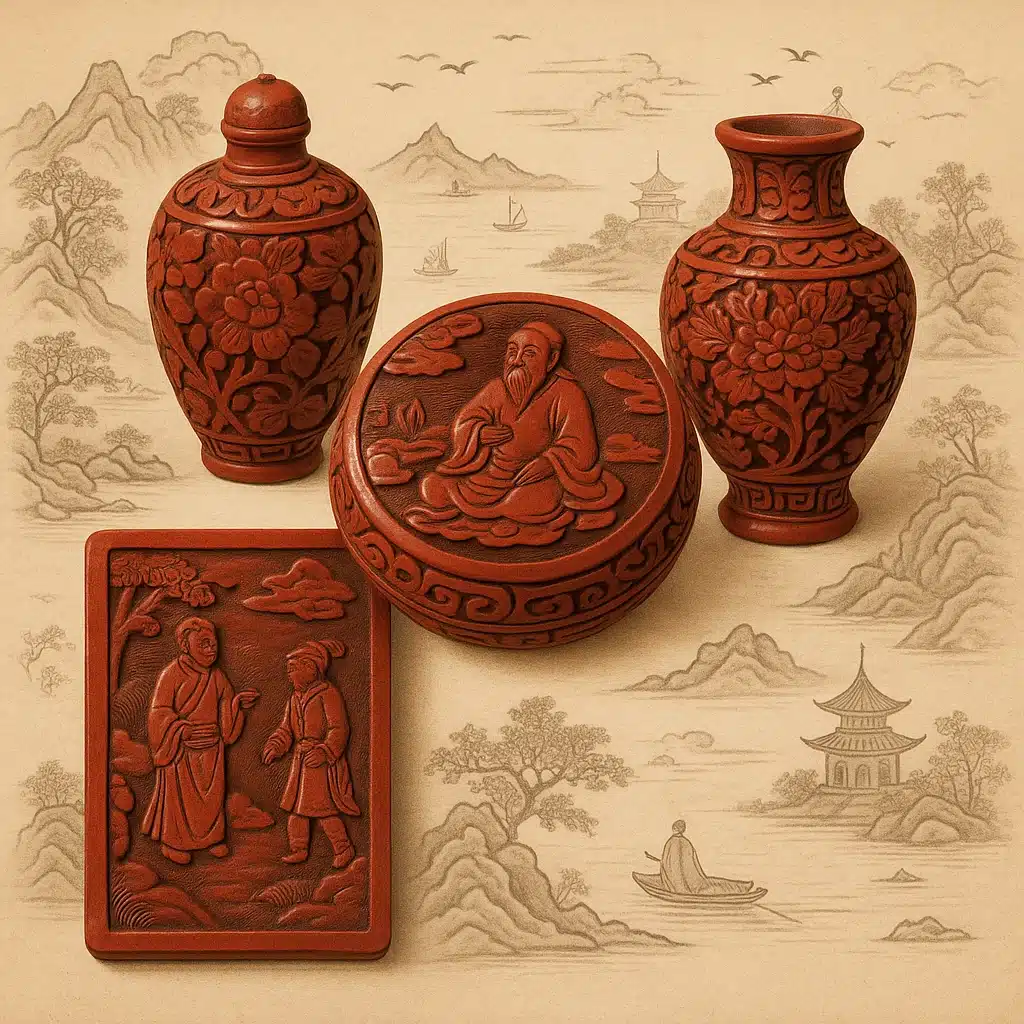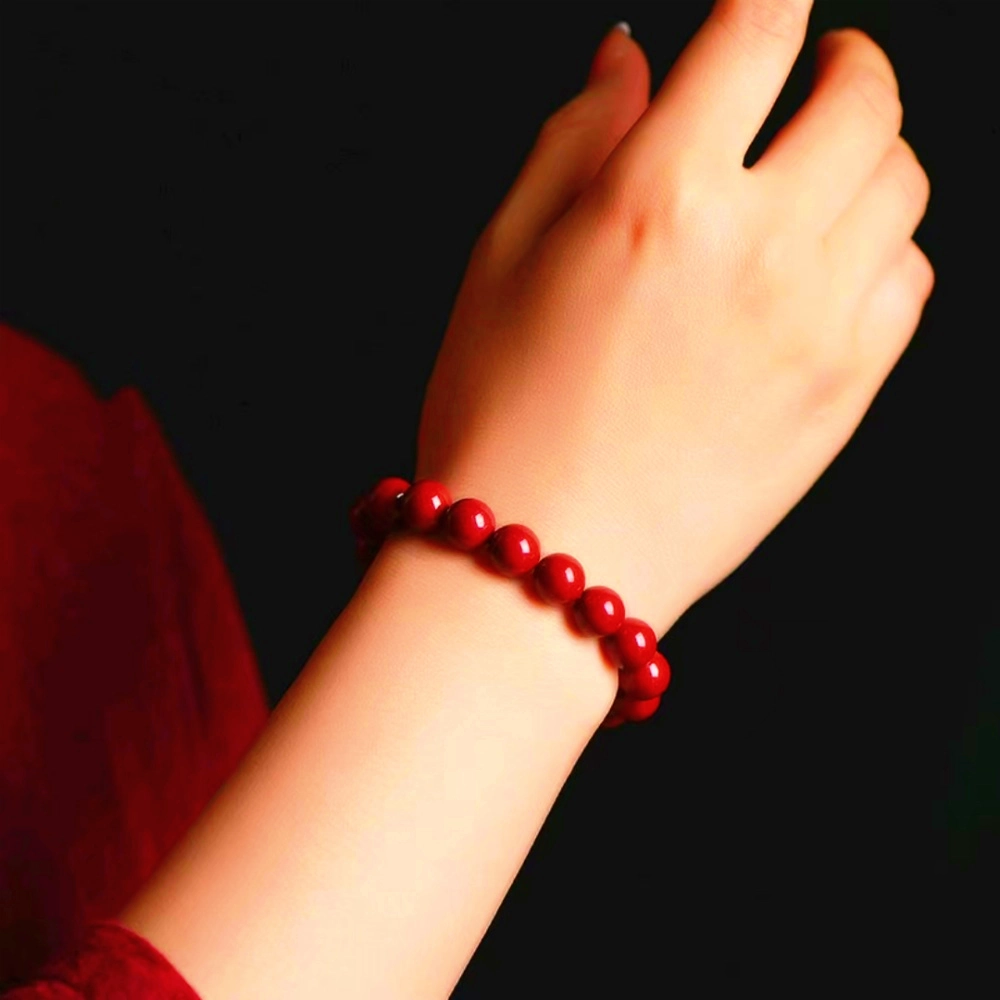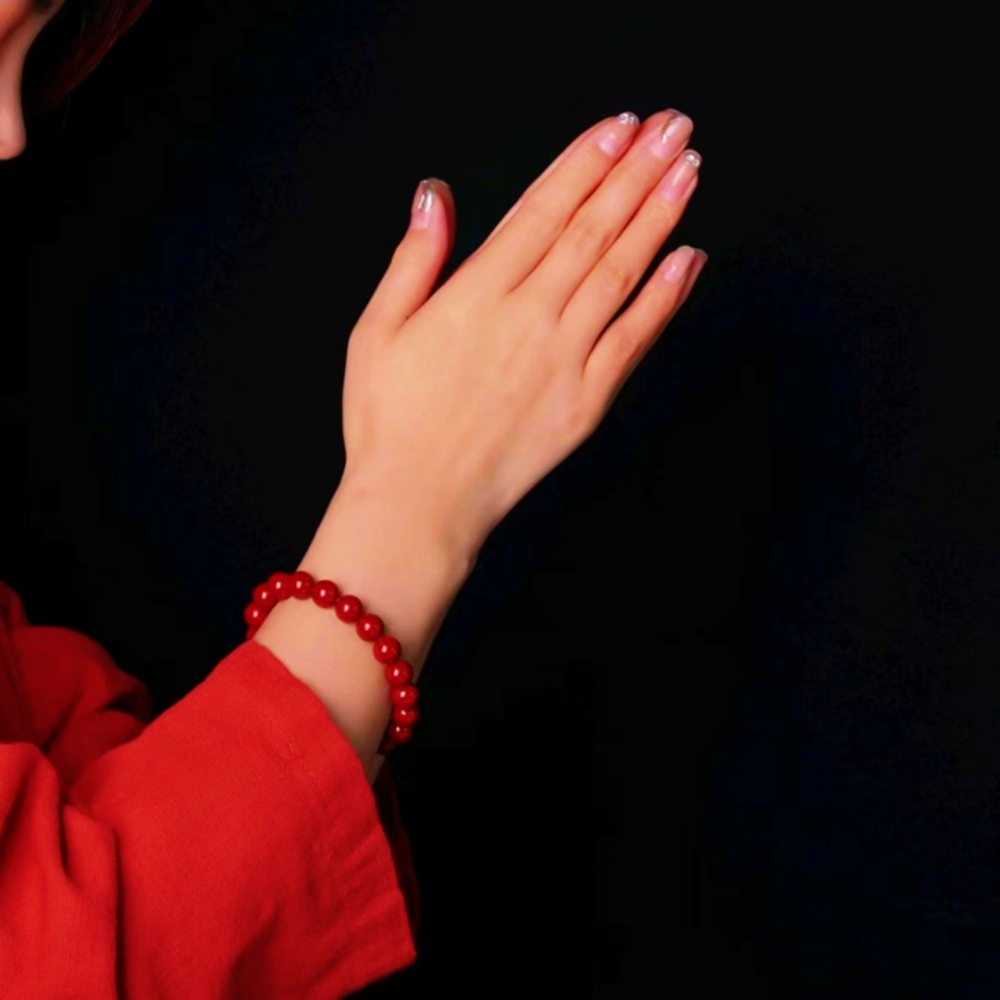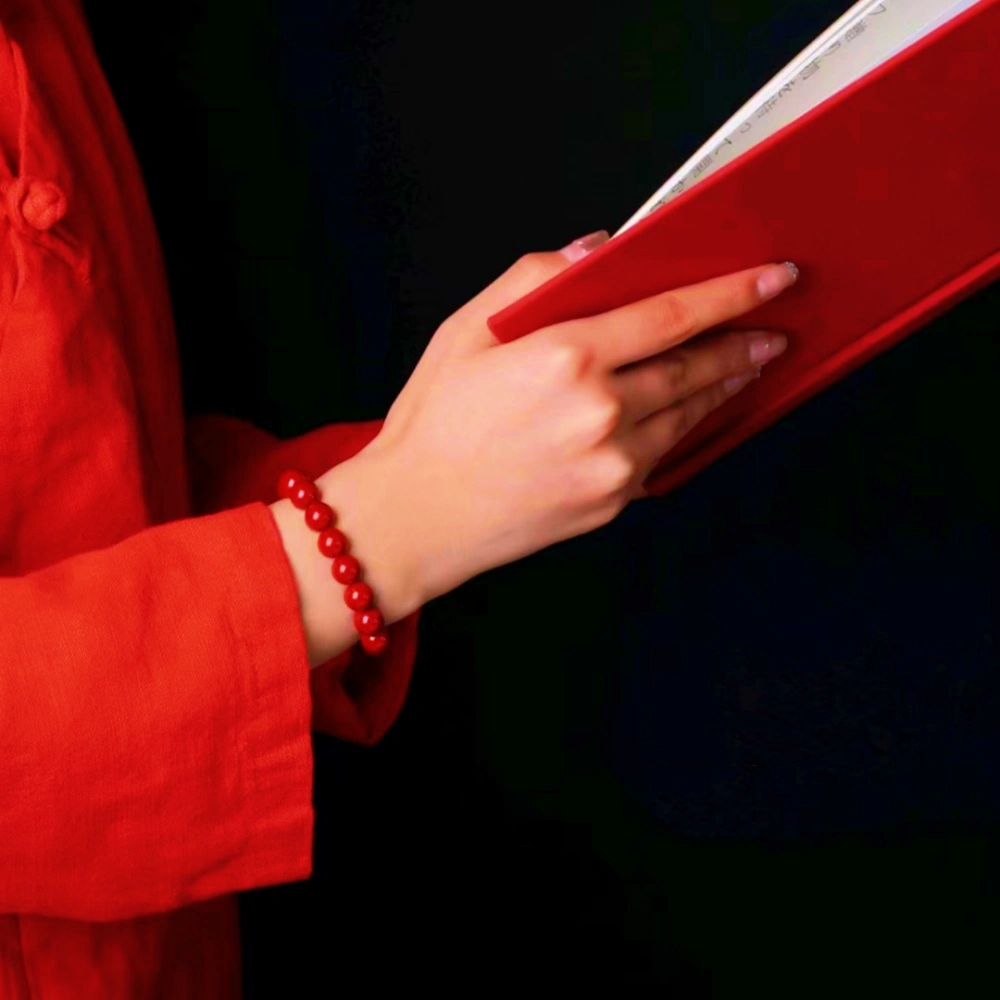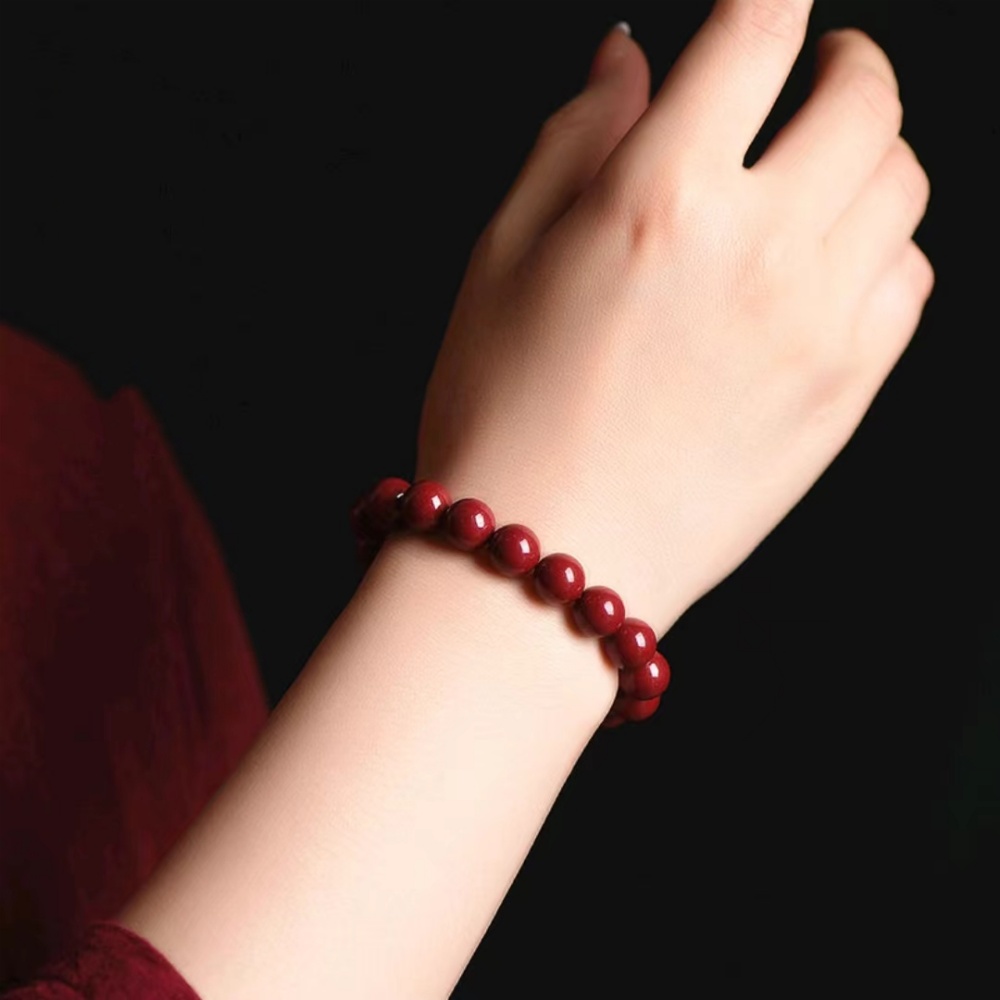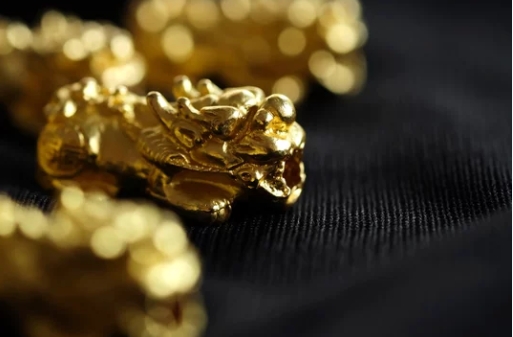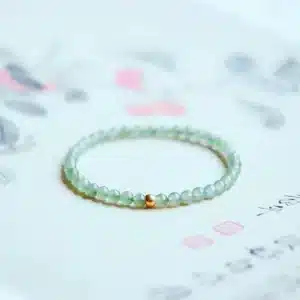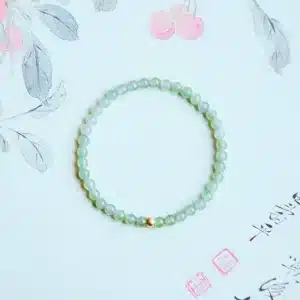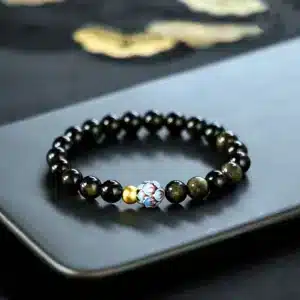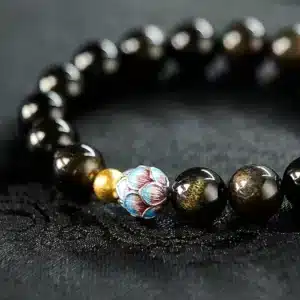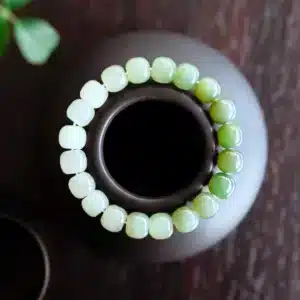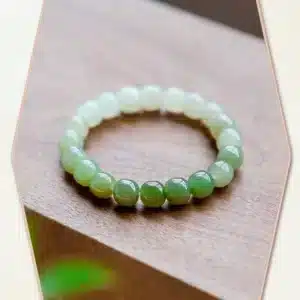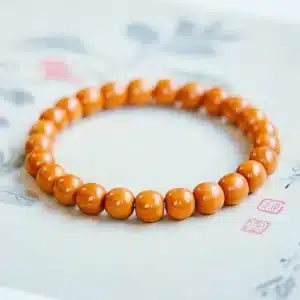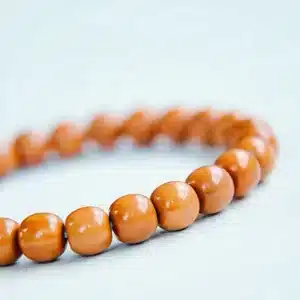In this era of ever-changing fashion and the interweaving of body, mind and spirit, there are only a handful of accessories that can take into account both traditional culture and modern aesthetics, and cinnabar bracelets are among the best. This eye-catching red accessory is not only elegant in appearance, but also contains thousands of years of history and culture and deep spiritual energy. Whether you are moved by its beauty or attracted by the meaning behind it, cinnabar bracelets are now becoming a favorite jewelry choice for more and more people who pay attention to the quality of life and spiritual pursuits.
This article will take you to a comprehensive understanding of the charm of cinnabar bracelets: its origin, cultural implication, wearing method, maintenance method, modern craftsmanship, and why it can become a bridge connecting tradition and fashion.
1.Frequently Asked Questions About Cinnabar Bracelets
1. Are cinnabar bracelets safe to wear?
Yes. Most modern cinnabar bracelets are made from synthetic cinnabar or eco-friendly resin lacquer. They are non-toxic and safe for daily wear, so there’s no need to worry about health risks.2. What are the benefits of wearing cinnabar bracelets?
Cinnabar is believed to ward off negative energy, attract wealth, and bring peace and focus. In traditional Chinese culture, it’s known as a powerful talisman for protection and good fortune—perfect for important occasions like exams, interviews, or new ventures.3. Which hand should I wear my cinnabar bracelet on?
It’s traditionally recommended to wear cinnabar on your left hand, which is considered the “receiving” side—helping you absorb positive energy and attract good luck. Wearing it on the right hand is believed to help release stress and let go of negativity.4. Is natural cinnabar really toxic?
Natural cinnabar contains mercury sulfide, which is very stable and does not easily absorb through the skin. Most modern cinnabar jewelry is made with purified or synthetic materials, making it safe for normal wear. However, it should not be broken or placed in the mouth.5. Can I wear my cinnabar bracelet while showering or sleeping?
It’s best to remove your bracelet before showering, swimming, or sleeping. Moisture and high heat can fade the color or damage the surface over time. Let your bracelet rest in a dry, cool place when not in use.2. What Is Cinnabar?
Cinnabar, also known as mercury sulfide (HgS), is a naturally occurring mineral renowned for its vivid vermilion hue. This distinctive ore boasts thousands of years of historical usage in China, from the crimson inscriptions on oracle bones and alchemical ingredients in Taoist practices to imperial seals and lacquerware, consistently embodying profound cultural significance. Its name originates from the Persian word “zinjifrah,” meaning “dragon’s blood,” later introduced to China where it became a symbol of authority, auspiciousness, and spirituality.
In nature, cinnabar primarily forms in low-temperature hydrothermal deposits, with major production sites in China’s Guizhou and Hunan provinces. The mineral exhibits an adamantine luster with a soft texture that lends itself well to carving, making it ideal for crafting various artifacts and jewelry. Ancient Chinese believed cinnabar possessed protective properties against evil, while Taoists revered it as the “essence of pure yang,” utilizing it for ritual talismans and religious implements. Modern processing techniques employ purification methods or safer alternative materials to preserve its traditional aesthetic while ensuring wearability.
Today, cinnabar bracelets transcend mere ornamentation to become cultural conduits bridging past and present. Their enduring crimson hue – unfaded through millennia – not only preserves the memory of Chinese civilization but also continues narrating the East’s mystical heritage through contemporary designs that resonate with modern aesthetics.
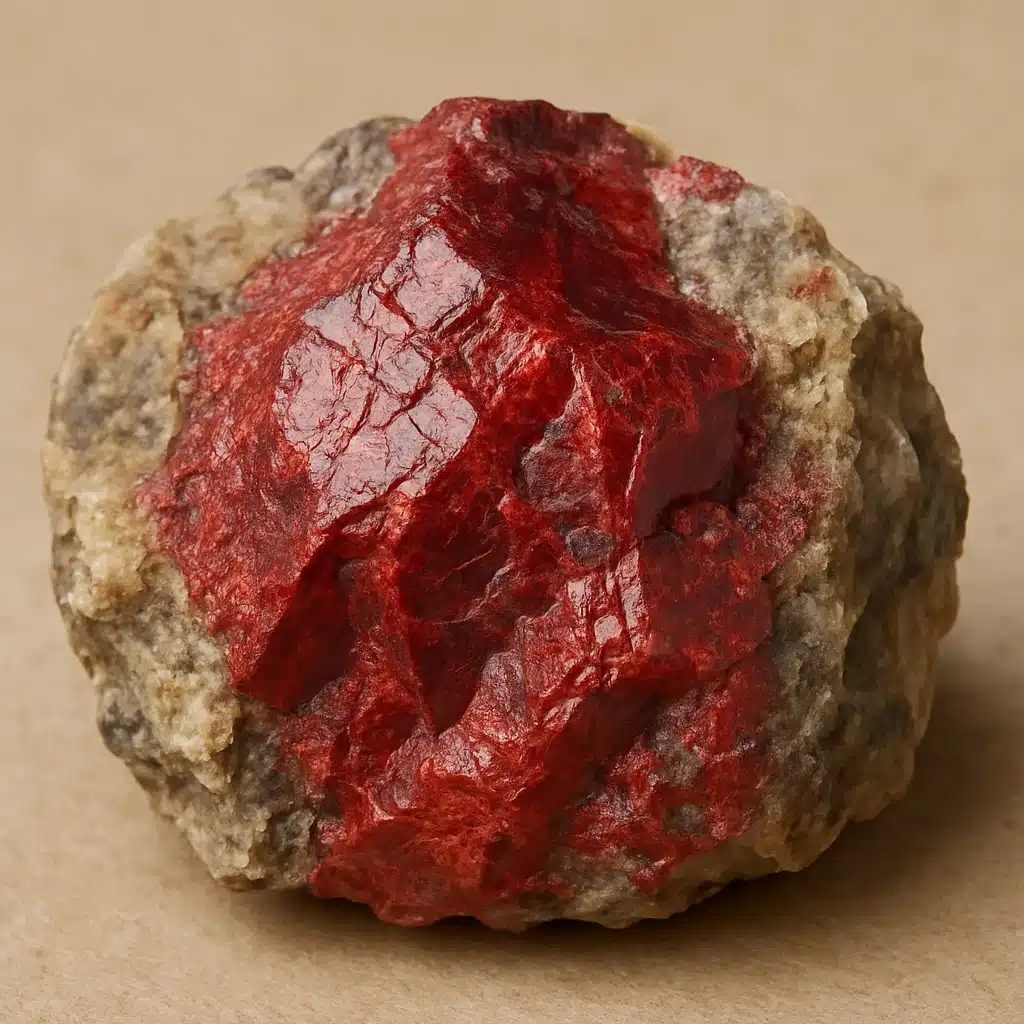
3, The Historical Status of Cinnabar in Chinese Culture
Cinnabar occupies a sacred position in China’s cultural heritage, serving as both a physical material and spiritual symbol across millennia. Its historical significance manifests in three key dimensions:
1. Ritualistic Significance
In ancient sacrificial rites, cinnabar represented the vital connection between heaven and earth. Shang dynasty (1600-1046 BCE) oracle bones reveal crimson inscriptions where cinnabar pigment filled carved divination texts, transforming mundane turtle shells into sacred communication mediums with deities. The Zhou dynasty ritual text “Rites of Zhou” documents its use in imperial ceremonies, where vermilion symbolized the Mandate of Heaven.
2. Taoist Alchemical Tradition
Taoist alchemists revered cinnabar as the “primordial elixir” (丹元). The 4th century “Baopuzi” by Ge Hong systematically recorded cinnabar’s alchemical applications, considering its cyclical transformation (HgS→Hg→HgS) as embodying Taoist cosmology. While the pursuit of immortality through cinnabar elixirs proved physiologically dangerous, this practice advanced early chemistry and metallurgy.
3. Imperial Authority Marker
From Qin Shi Huang’s reign (221-210 BCE), cinnabar became institutionalized as an imperial prerogative. The “vermilion endorsement” (朱批) system required all imperial edicts to bear the emperor’s cinnabar seal, a practice lasting until 1912. Ming dynasty (1368-1644) lacquerware reached its zenith with Beijing’s “Diaojin” workshops producing exquisite cinnabar-red furniture exclusively for the Forbidden City.
4. Cultural Paradox
This sacred mineral embodies China’s historical duality – its toxicity mirrors the delicate balance between Daoist transcendence pursuits and Confucian earthly governance. Modern archaeological chemistry reveals that the Terracotta Warriors’ weapons bore cinnabar coatings as preservatives, demonstrating its practical wisdom beyond mysticism.
Today, cinnabar artifacts in museums and contemporary jewelry designs continue transmitting this layered cultural DNA, where every vermilion hue whispers stories of China’s philosophical, scientific and artistic evolution.
4, The Symbolic Meaning of Cinnabar Bracelets
Cinnabar bracelets carry profound cultural symbolism in Chinese tradition, representing a unique fusion of spiritual beliefs, aesthetic values, and philosophical concepts. These vibrant red accessories are far more than mere ornaments – they serve as tangible connections to China’s ancient wisdom and cosmic worldview.
1. Protective Talisman
Traditionally believed to possess potent yang energy, cinnabar bracelets function as:
- Evil warders: Thought to create an invisible shield against negative forces
- Spiritual purifiers: Said to cleanse the wearer’s personal energy field
- Harmony balancers: Believed to maintain equilibrium between body and environment
2. Status and Refinement
Historically, these bracelets indicated:
- Scholarly attainment: Often worn by literati alongside jade pendants
- Social distinction: The intense red hue symbolized noble character
- Cultural sophistication: Demonstrated appreciation for traditional craftsmanship
3. Vitality and Fortune
The rich crimson color embodies:
- Life force: Representing the essence of blood and vitality
- Prosperity: Symbolizing flourishing energy and good fortune
- Celebration: Echoing the joyous red palette of Chinese festivals
4. Philosophical Depth
The bracelet’s circular form and mineral essence reflect:
- Taoist cosmology: The unbroken circle symbolizes eternal cycles
- Confucian ideals: The material’s endurance represents moral constancy
- Buddhist mindfulness: Worn as a reminder of spiritual awareness
5. Contemporary Interpretation
Modern wearers value cinnabar bracelets as:
- Cultural heritage: Connecting with ancestral traditions
- Mindful accessories: Serving as meditation aids
- Sustainable luxury: Representing eco-conscious mineral artistry
Each bracelet’s unique patterns – whether showing crystalline formations or smooth lacquer finishes – tell a distinct story while maintaining these timeless symbolic connections. The very act of wearing becomes a personal ritual, blending ancient symbolism with individual expression.
5, Modern Craftsmanship of Cinnabar Bracelets
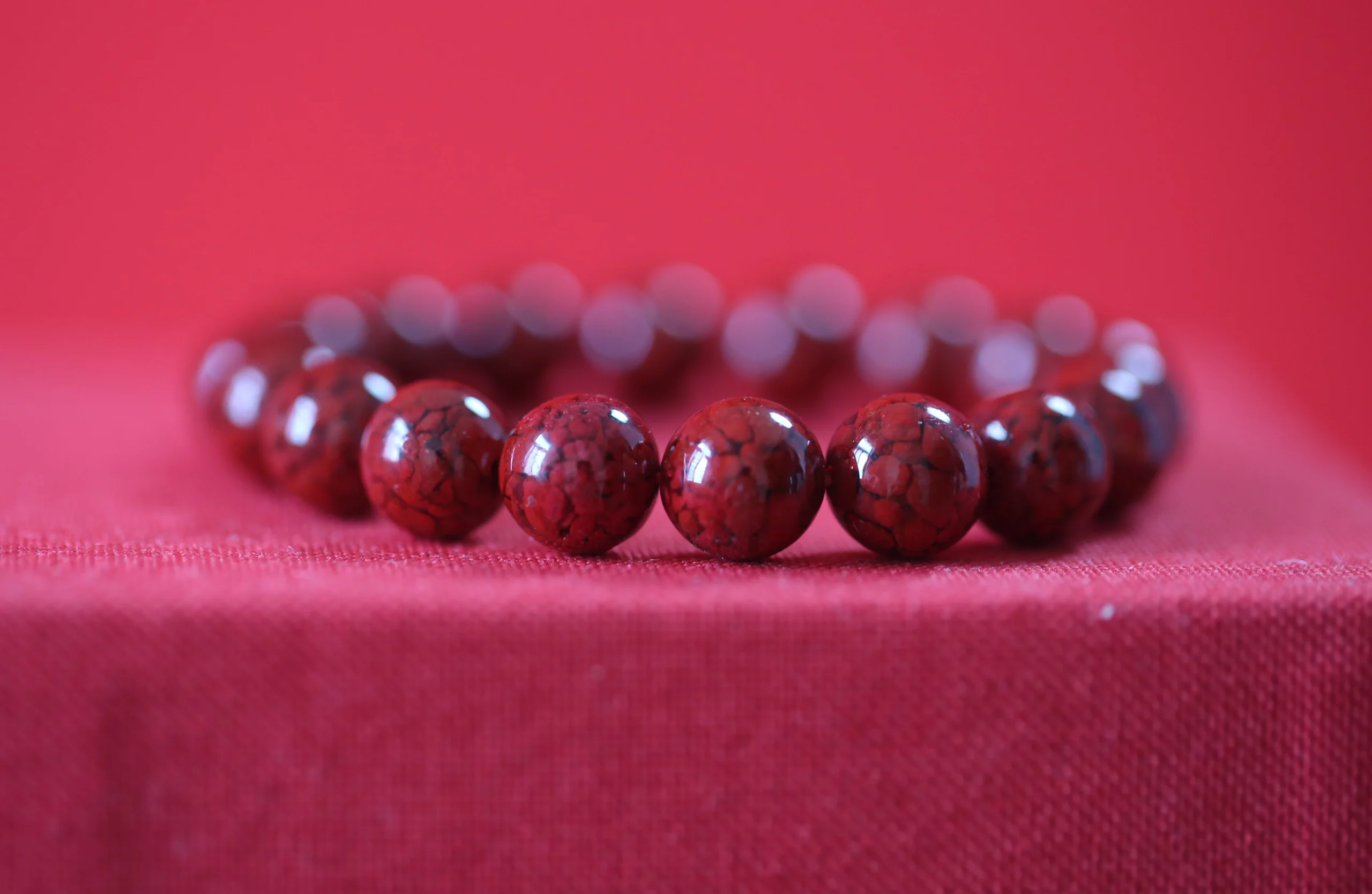
Contemporary cinnabar bracelet production combines ancient techniques with modern technology, creating pieces that honor tradition while meeting today’s aesthetic and safety standards.
1. Material Innovation
- Purified cinnabar composites: Using 92-96% pure HgS mixed with plant resins
- Eco-friendly alternatives: Mercury-free mineral pigments for sensitive wearers
- Hybrid designs: Combining cinnabar inlays with gold/silver accents
2. Precision Manufacturing Process
Stage 1: Material Preparation
- Raw material purification through micron-level filtration
- Color stabilization using proprietary oxidation techniques
- Resin blending for enhanced durability (up to 3x traditional hardness)
Stage 2: Forming Techniques
- CNC carving for intricate patterns (0.1mm precision)
- Hand-finishing by master artisans (preserving traditional motifs)
- Multi-layer lacquering (up to 15 coats for depth of color)
Stage 3: Quality Enhancement
- UV-cured protective coatings
- Micro-crystalline wax polishing
- Lead-free metal fittings
3. Artistic Techniques
- Relief carving: 3D designs with 0.5-2mm projection
- Openwork: Delicate fretwork patterns
- Inlay work: Mother-of-pearl or malachite accents
4. Safety Innovations
- Mercury encapsulation technology
- Non-porous surface treatments
- Third-party toxicity testing (meeting EU REACH standards)
5. Contemporary Design Elements
- Minimalist geometric patterns
- Interchangeable modular components
- Smart bracelet integrations (discreet health monitoring)
6, How to Wear a Cinnabar Bracelet
Whether you wear it for its beauty or its energy, there are a few tips to keep in mind:
1. Which Hand to Wear It On?
Wear on the left hand: Traditionally, the left hand is considered to be the side that “absorbs energy”. It is suitable for people who want to enhance the effect of cinnabar in warding off evil spirits and calming the mind. It is suitable for daily office work, meditation or occasions that require concentration.
Wear on the right hand: The right hand symbolizes “releasing energy”. It is suitable for people who want cinnabar to help dispel negative emotions or protect their own aura. It is suitable for socializing, traveling or entering an environment with a mixed aura.
Note: Modern wear is more about personal habits. There is no need to strictly distinguish between the left and right hands. Comfort is the main consideration.
2.How to Style It
Cinnabar bracelets have bright colors and are suitable for matching with the following styles:
- Neutral colors: such as white, black, gray, and beige, highlighting the highlights of the bracelet
- Natural materials: such as wood, turquoise, and jade, forming an oriental Zen style
- Gold jewelry: The combination of gold and vermilion looks luxurious and elegant
7, Caring for Your Cinnabar Bracelet
How to maintain a cinnabar bracelet?
In order to maintain the color and texture of the cinnabar bracelet, daily maintenance is very important:
❌ Avoid contact with water, perfume, alcohol spray and other chemicals
☀️ Do not expose to the sun for a long time to prevent fading
🧽 It is recommended to wipe gently with a clean and soft cloth
📦 When storing, place it in a jewelry box or cloth bag to avoid bumps
As long as you take good care of it, a cinnabar bracelet can accompany you for many years and always look new.
8, Who Should Wear a Cinnabar Bracelet?
Anyone can wear a cinnabar bracelet — whether for spiritual reasons, fashion, or cultural appreciation. It is especially popular among:
Entrepreneurs and businesspeople who want to attract wealth and success
Spiritual seekers and energy healers who value the stone’s protective properties
Art lovers and collectors who appreciate the craftsmanship and cultural beauty
Gift givers looking for a meaningful present that carries luck and blessings
A cinnabar bracelet makes a thoughtful gift for birthdays, New Year’s, graduations, and major life transitions.
9, Where to Buy Authentic Cinnabar Bracelets
If you’re considering adding a cinnabar bracelet to your collection, make sure to choose a reputable source. Look for:
Transparent descriptions (natural or synthetic cinnabar?)
Handmade or hand-carved details
Ethical sourcing and safe materials
Positive customer reviews and return policies
At Serestone, we specialize in handcrafted cinnabar bracelets that combine cultural symbolism with elegant design — perfect for modern souls who cherish meaningful accessories.
10, Final Thoughts
Cinnabar bracelets are more than beautiful — they’re spiritual tools, cultural symbols, and artistic masterpieces rolled into one. Whether you’re drawn to their protective energy, their association with wealth and good luck, or simply their striking red color, wearing a cinnabar bracelet is a way to honor tradition while expressing your personal style.
In a world filled with fleeting trends, cinnabar bracelets stand the test of time. Add one to your collection and wear a story of strength, elegance, and spiritual connection — every single day.

